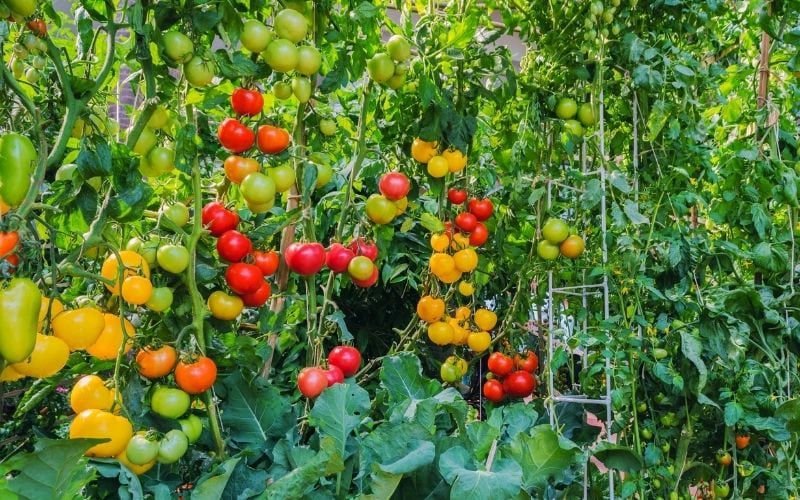
Much like their name implies, the meaty and juicy texture of beefsteak tomatoes has given them quite the reputation amongst gardeners.
These extra large delicious tomatoes are highly coveted in any kitchen. There is nothing quite like a perfectly sliced beefsteak tomato on a sandwich or burger.
Beefsteak tomatoes are among the largest and most diverse of all tomato types. But you may be surprised that “beefsteak” is just a category of tomatoes that includes dozens and dozens of unique cultivars bred for specific flavors, colors, climates, and performance in the garden.
These vine-ripened beauties come in a rainbow array of colors, from red, orange and yellow to pink, green, and even dark purplish black.
They can be heirlooms, open-pollinated varieties, or hybrids. Some beefsteaks are bred for quicker maturity in cold climates or resilience to heat in warm climates.
Best of all, the top beefsteak tomato varieties yield in great abundance to even the most novice gardener.
If you’ve been dying to grow beefsteak tomato plants in your garden, you may be overwhelmed by the amount of seeds to choose from. In this list, we’ve narrowed down the most popular and well-performing beefsteak cultivars for home gardeners. You may be surprised how diverse and vigorous these tomato vines can be.
History of Beefsteak Tomatoes
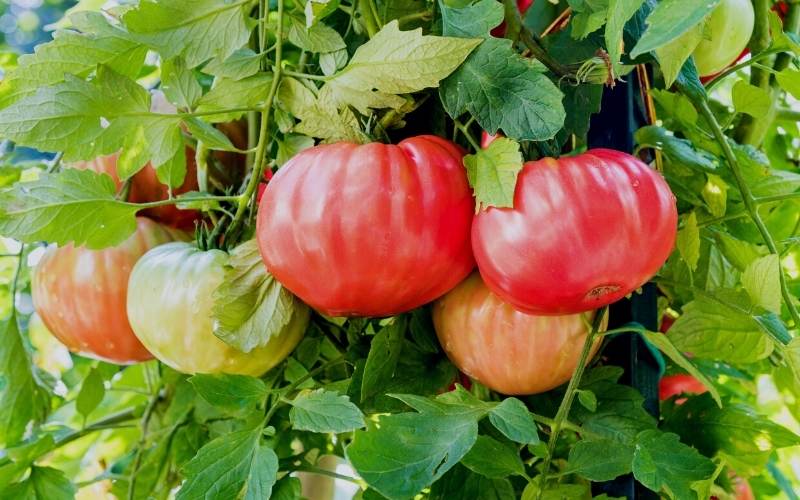
Beefsteak tomatoes can be mammoth-sized and so rich in flavor that all other tomatoes pale in comparison.
These delicious slicers look like a far fetched cousin of their wild ancestors, however recent studies have traced the origins of beefsteak tomatoes back to conquistador Hernan Cortez, who brought giant tomatoes to Europe from Mexico in the early 16th century.
But he wasn’t the one who found them, of course; Cortez simply collected seeds from the brilliant Aztec farmers who had cultivated the meaty tomatoes for many generations.
While some may think these one pound “freak of nature” fruits come from some sort of genetic modification, they were actually bred completely naturally thanks to a series of selections hundreds of years ago.
The original natural mutation is hypothesized to have come from a rare proliferation of stem cells in a tomato plant’s growing tip. This led to tremendously sized tomatoes that seed savers collected for generations.
Open Pollinated vs. Hybrid Seeds
Solanum lycopersicum ‘Beefsteak’ is the Latin name for the beefsteak group of tomatoes. But as we mentioned above, there are dozens and dozens of seed types that fit under this category.
Beefsteak seeds can be either open-pollinated or hybridized. The difference between these two types of tomatoes is related to how they were bred and whether or not you can save “true to type” seeds.
Open pollinated (OP) beefsteak tomatoes include heirlooms like ‘Cherokee Purple’, ‘Brandywine’, and ‘Striped German’. These types of seeds have been passed down through generations and if you save the seeds to replant next season, they will grow a plant very similar to the mother plant.
Hybrid varieties are comparatively newer, though they’ve been cultivated for many decades.
An F1 hybrid beefsteak like ‘Captain Lucky’ or ‘Big Beef Plus’ is created from crossing two different lines of tomatoes to create a desired offspring. This is by no means genetic modification.
Hybridization is a natural process that simply allows plant breeders to breed for specific traits like disease resistance or size more easily than they can with OP seeds. Hybrid varieties also tend to be more vigorous than OP tomatoes.
Lastly, if you save seeds from a hybrid tomato, they will not plant “true to type” the following season.
This is why seed savers tend to prefer open pollinated varieties, whereas commercial growers often opt for more vigorous hybrid varieties. Either way, you’ll likely end up with a delicious beefsteak tomato!
What is a Beefsteak Tomato?
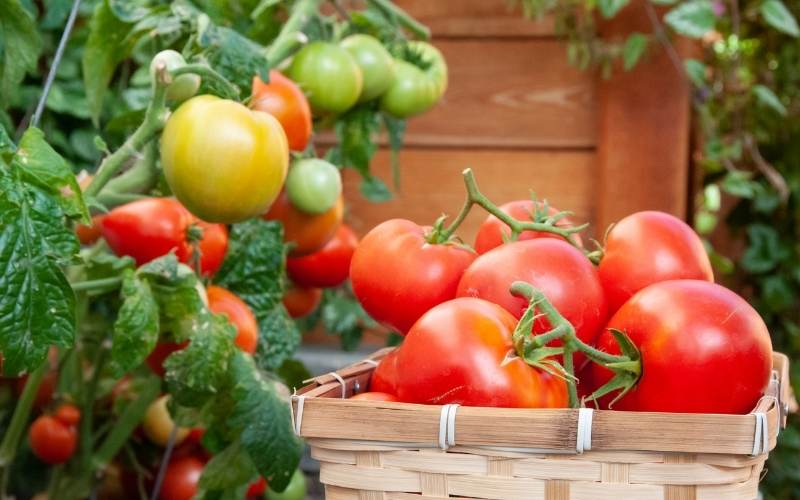
Beefsteak tomatoes got their name for their extra large size and meaty texture. They have a classic tomato flavor that is sometimes sweeter than average.
Thanks to their large round size and perfect slicing, these tomatoes tend to be the best for sandwiches and burgers, whereas smaller heirlooms and cherry tomatoes are typically used for salads or salsas.
The largest beefsteak tomatoes can be up to 6” in diameter and weigh around a pound. They have many small seed compartments inside the fruit and sometimes include the pronounced ribbing patterns that stemmed from ancient pre-Columbian tomato cultivars in North America.
Most varieties of beefsteak tomatoes grow on large vigorous plants that are at least 6 feet tall and take 70-85 days to produce fruit.
How to Grow the Best Beefsteak Tomatoes
Like all tomatoes, beefsteak varieties really enjoy plenty of heat, sunlight, and fertility. The beefiest, most delicious beefsteak tomatoes come from happy, healthy plants that were grown in quality soil.
If you want to have the best slicing tomatoes in the neighborhood, follow these simple tips:
1. Begin with quality seedling starts
Beefsteak tomatoes benefit from a head start in most temperate climates. Starting seeds indoors 6-7 weeks before the last frost will help ensure that plants get the maximum amount of outdoor growth time to yield loads of meaty tomatoes.
Whether you get your starts from a local nursery or grow them yourself, be sure that they are robust, well-rooted, and not too “leggy” from reaching for the sun.
Quality seedlings will have vibrant green leaves, a thick strong central stem, and roots that are well-established by not rootbound in the container.
2. Prepare rich, well-drained garden soil
Beefsteak tomato plants thrive in fertile loamy soil that has plenty of aeration and organic matter. Use a digging fork or broadfork to loosen the soil in your garden beds and amend with a couple inches thick of high quality compost.
This will help keep your beefsteak tomatoes well-drained and well-fed all summer long.
3. Provide plenty of fertility
As you can imagine, growing a bunch of giant 1-pound tomatoes requires a lot of plant food.
Beefsteak tomatoes are heavy feeders that prefer plenty of amending with an all-purpose organic fertilizer like Down to Earth granular fertilizer or Neptune’s Harvest Tomato & Veg formula.
The latter is especially beneficial if diluted to ⅛ cup per gallon of water and poured on the root zone every 1-2 weeks throughout the growing season.
These fertilizers increase the yields of tomatoes and the vigor of the plants themselves. A hungry beefsteak tomato plant will have a hard time ripening the big delicious fruits you’re hoping for.
4. Use proper spacing
Just like humans, tomatoes don’t like to be crowded and smooshed together. Proper spacing will ensure that your beefsteak tomato plants can grow to their full glory and produce plenty of fruits.
Most cultivars require at least 2-4 square feet of space, so plan your garden space accordingly. Beefsteak tomatoes that are planted too close together will have lower yields and may succumb to diseases.
5. Choose a beefsteak variety suited for your climate
Before you dig in, it’s important to make your seed selections with an eye for adaptability to your specific climate.
Gardeners with shorter growing seasons will probably prefer a fast-maturing beefsteak tomato variety.
Gardeners in extra moist or humid climates may need a disease-resistant beefsteak.
And any chefs or tomato connoisseurs may prefer the tastiest, most unique beefsteak varieties around. We found the top 21 best cultivars that can fit each of these scenarios and more.
Top 21 Best Beefsteak Tomato Varieties to Grow in Your Garden
1: ‘Super Beefsteak’
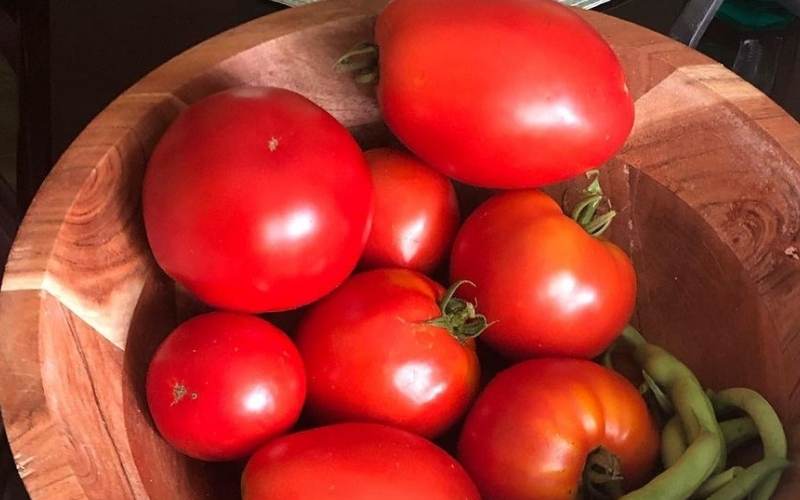
Burpee Seeds call this one “better than beefsteak” because of its flavorful meat fruits with smooth shoulders and smaller blossom end scars.
Prolific indeterminate (vining) plants take 80 days to mature and yield uniform fruits that average about 17 ounces.
These plants need plenty of space and a trellis or tomato cage to support their growth.
2: ‘Cherokee Purple’
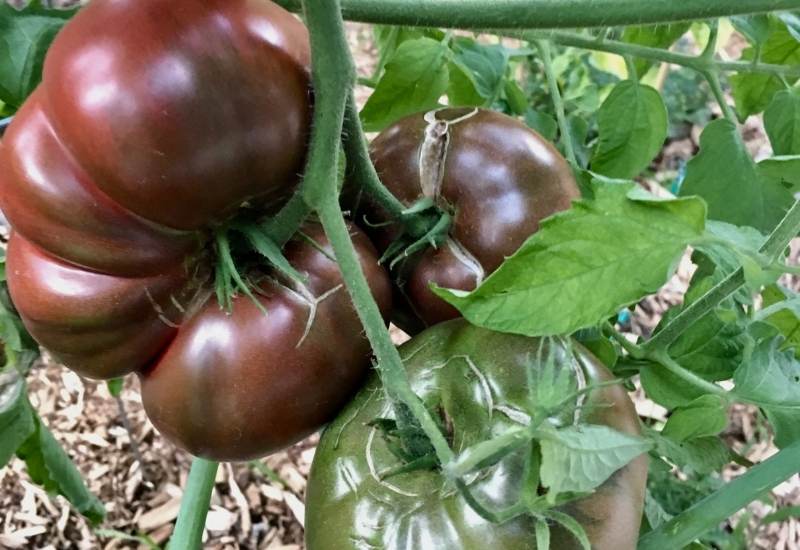
This unusual purplish-red and dusky pink beefsteak heirloom is known for its well-rounded flavor and gorgeous coloration.
The rich taste and texture have earned this tomato a great reputation amongst heirloom enthusiasts.
The medium-large fruits are a flattened-spherical shape and average between 8 and 12 ozs. The vines are shorter than other indeterminates and can be pruned to grow well in more compact gardens.
3: ‘Cherokee Carbon’
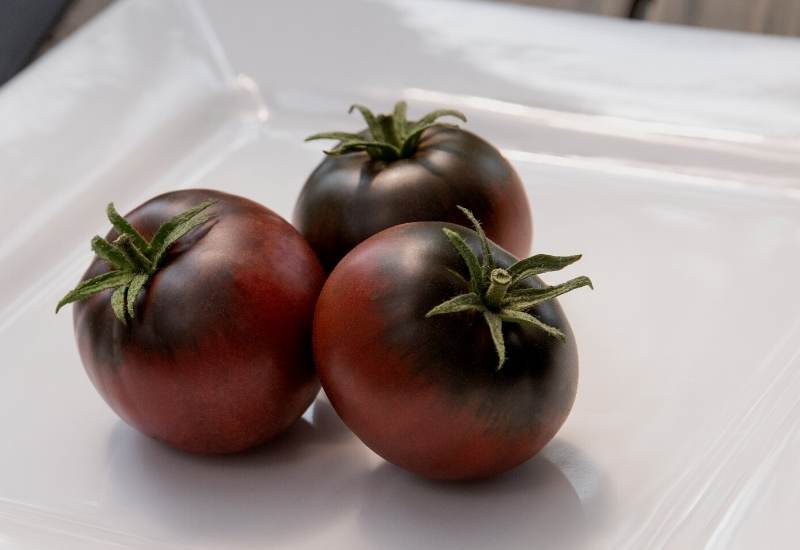
This dusky purple tomato is similar to ‘Cherokee Purple’ but hybridized for resiliency and crack resistance. Plants are tall and very prolific, often producing fruits all the way until the first frosts of fall. The gorgeous colors and delicious flavor makes for the greatest tomato sandwich you’ve ever tasted.
4: ‘Madame Marmande’
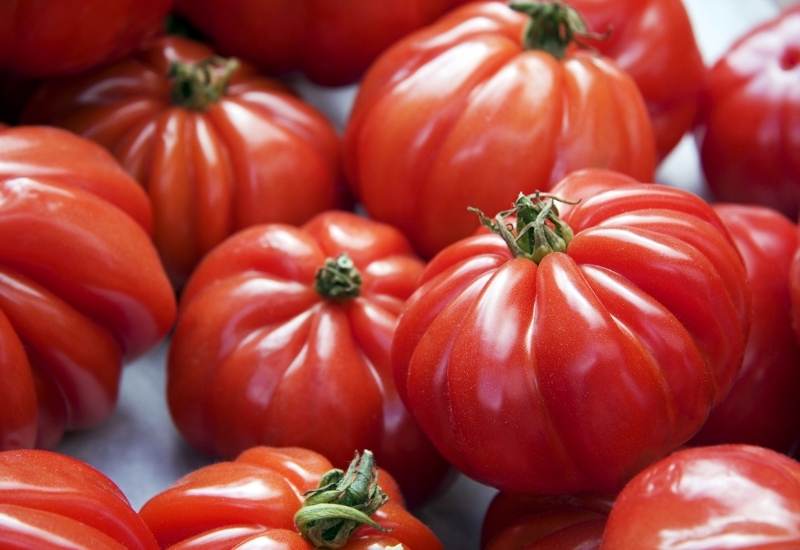
If you’re looking for a gourmet juicy French beefsteak, this is the variety for you! These fruits are broad-shouldered and hefty, averaging 10 oz and rich with flavor.
The skin is usually a deep scarlet red and won’t crack like similar varieties. It is fairly quick to mature and usually transplanted outside the first week of May in mild climates.
5: ‘Pink Brandywine’
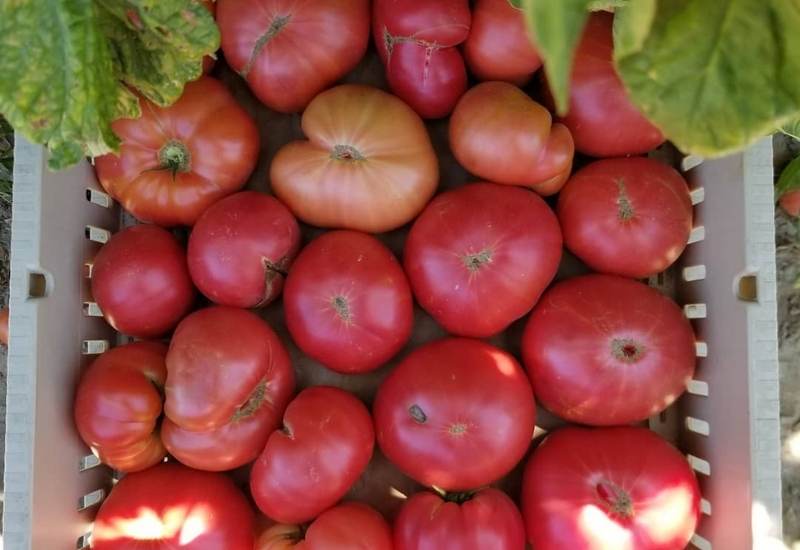
This vibrant pink heirloom slicer is as tasty as it is beautiful. The unique blush pink skin and robust meaty texture make this the perfect beefsteak for gorgeous open-faced sandwiches and salads.
A perfect fall variety, the fruits average about 1 lb and prefer the cooler weather of September to finally ripen.
6: ‘Big Beef Plus’
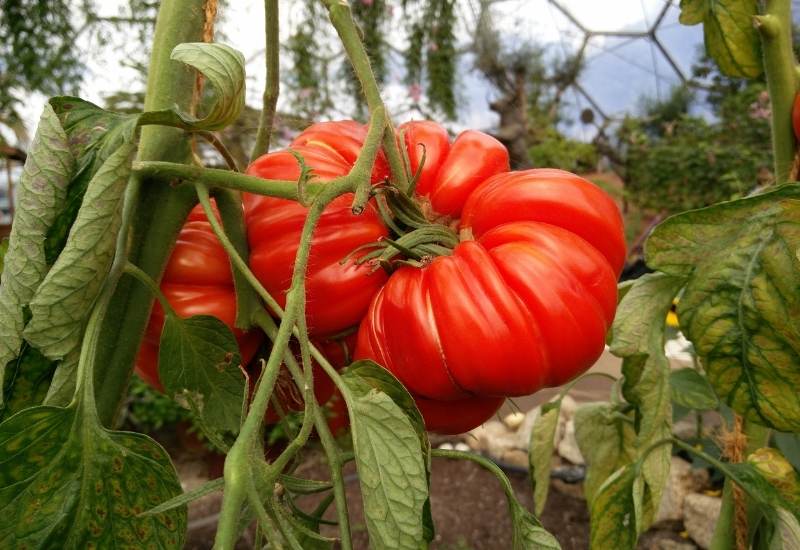
‘Big Beef’ is highly regarded amongst commercial farmers because it is widely adaptable and extremely high-yielding.
This ‘Plus’ cultivar takes that all to the next level with more sweetness, added resistance to tomato mosaic virus, and an extra rich ruby-red interior.
7: ‘Captain Lucky’
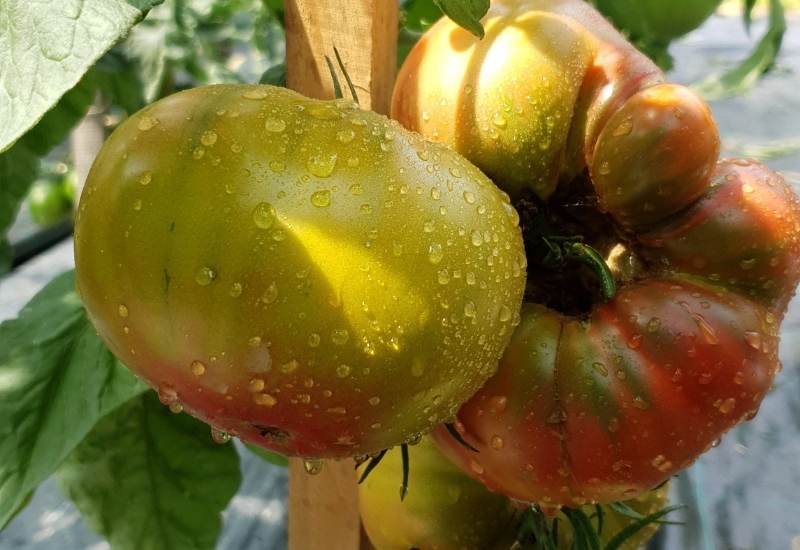
If you prefer a more unique beefsteak variety, this neon green tomato with a psychedelic colored interior will wow any dinner guests.
When ripe, the fruits are green and red on the outside with a yellowish-chartreuse interior that is streaked with bright pink and red.
‘Captain Lucky’ is a vigorous hybrid bred in North Carolina and matures quickly enough for most climates in the U.S. It has an open-habit and is best grown with a tomato cage in your garden.
8: ‘Black Krim’
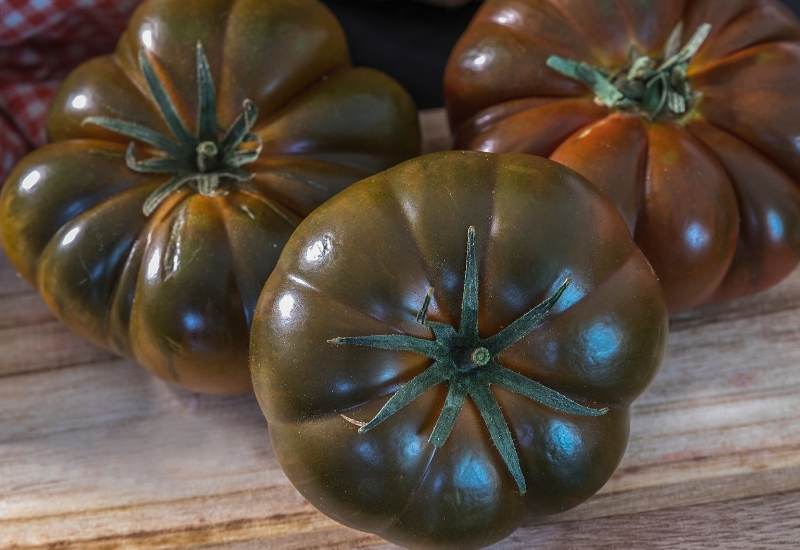
With dark maroon flesh and wonderfully rich flavor, this heirloom is another showstopper in any garden.
The variety originated on a peninsula of the Black Sea with perfect Mediterranean “tomato summers”. However, it will gladly tolerate a bit more heat or chill as long as it stays above a cozy 55°F.
9: ‘Damsel’
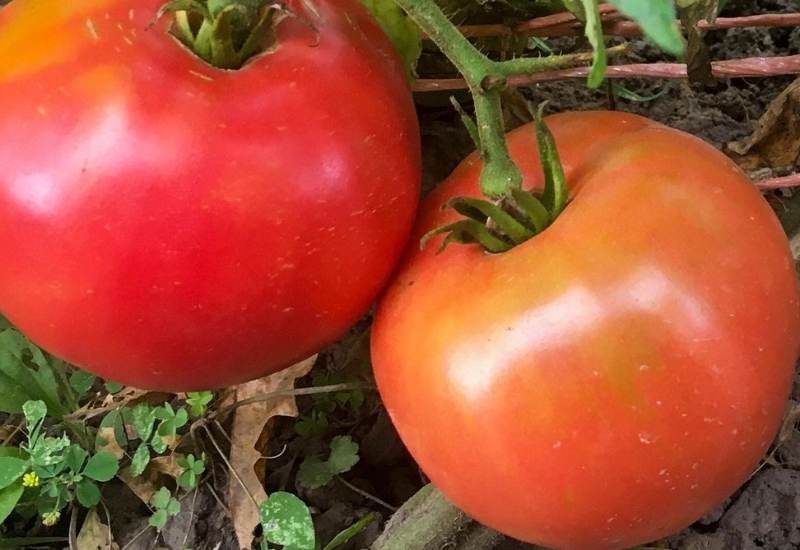
This stunning pink beefsteak tomato has all the flavor and color of an heirloom with the late blight resistance of a hybrid. It was bred by EarthWork seeds and when trialed in Massachusetts, farmers reported that they couldn’t keep up with chefs’ demand for this incredible tomato!
Even in its peak pink ripeness, it holds for several days on your counter and makes a great garden gift.
The yields are prolific and the vines are fairly vigorous. But if this tomato gets stressed, the fruits are prone to cracking.
10: ‘Aunt Ruby’s German Green’
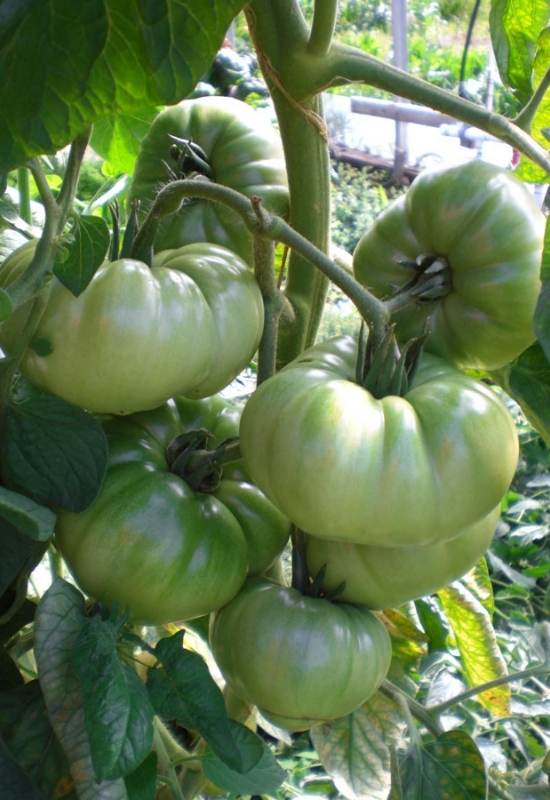
Another greenish beefsteak slicer, these large 12-16 oz fruits have the flavor of a Brandywine with a lime-green skin and bright yellow flesh with an amber tinge.
Beautiful on salads and burgers or in salsa verde, this heirloom is also coveted for its superb taste that is perfectly sweet and tart.
11: ‘Big Beefsteak’
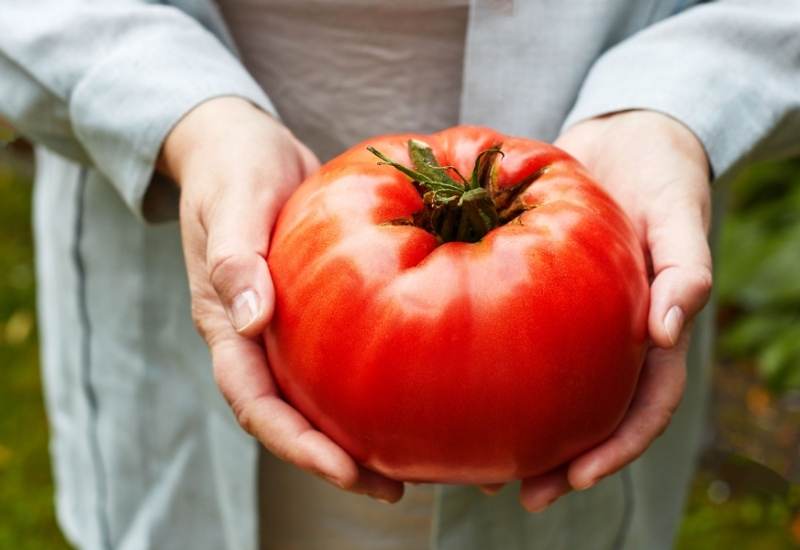
One of the few determinate (bush-type) beefsteak tomatoes, this classic heirloom is a more manageable size for smaller home gardens.
The deeply red, rich fruits that are up to 2 lbs in weight fit all the classic beefsteak qualities. They mature all at the same time for the perfect family cookout or canning weekend.
12: ‘Grand Marshall’
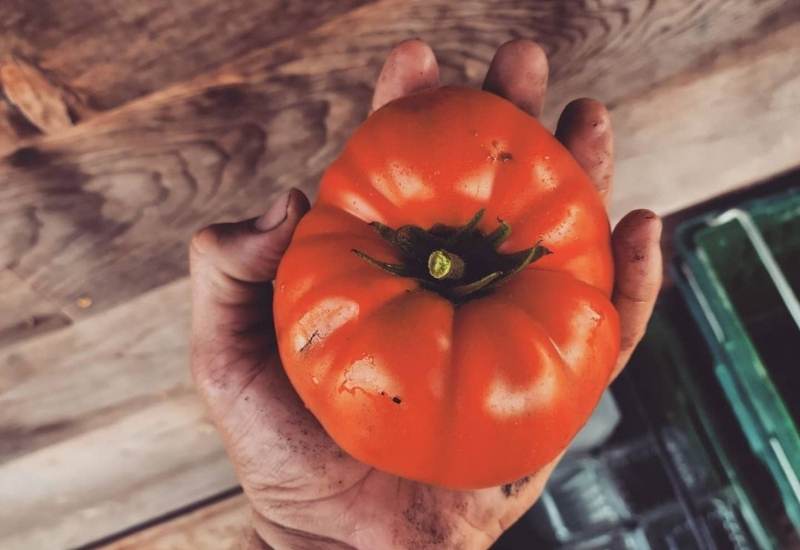
One of the best selections for southern climates, ‘Grand Marshall’ readily sets fruit even in the hottest summers. This beefsteak hybrid produces huge yields of big 10-14 oz fruits with an oblate shape.
It is resistant to both verticillium wilt and fusarium wilt. Best of all, it is also determinate, so less pruning and trellising work are required.
13: ‘Porterhouse’
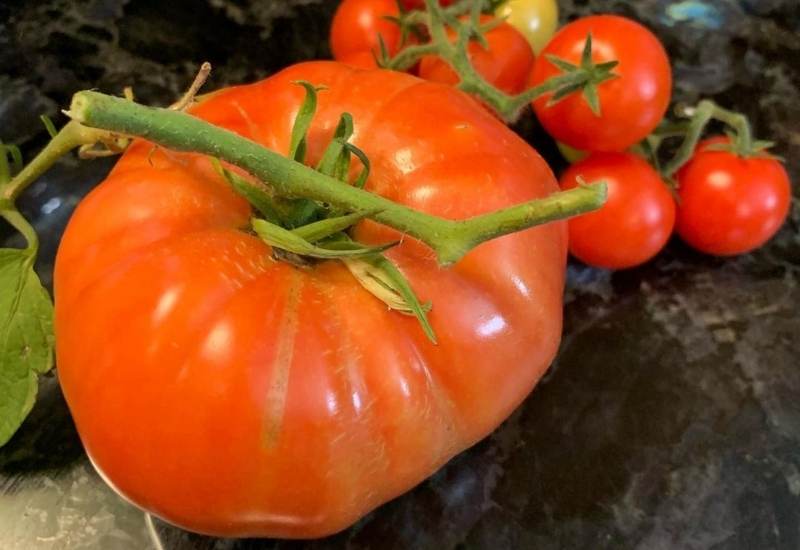
Burpee claims this is the greatest extra-large beefsteak they’ve ever bred. I’d have to agree! These tomatoes are a whopping 2 to 4 lbs and bursting with flavor!
They’re deep red and luscious all the way through, with a solid meaty texture that is perfectly juicy (but not too juicy) for burgers and sandwiches. This is like a classic old-fashioned beefsteak with extra vigor.
14: ‘Kellogg’s Breakfast Tomato’
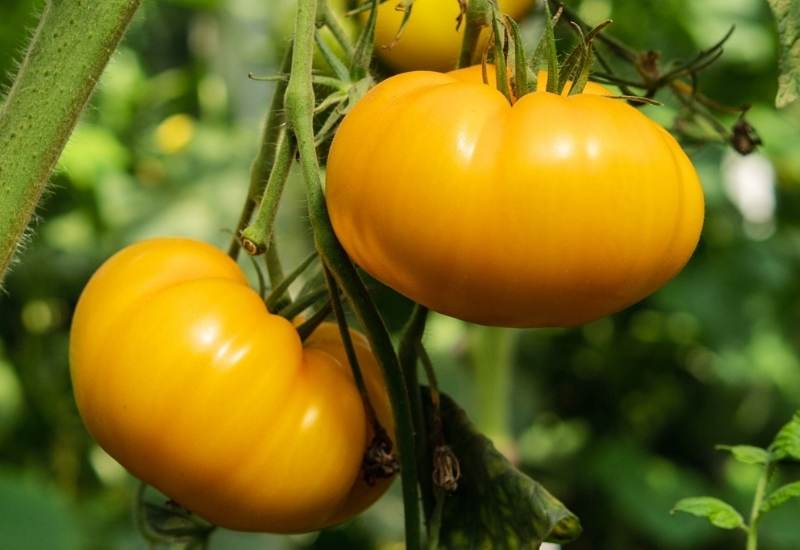
Have you ever heard of a vibrant orange beefsteak? Well, look no further. This rare heirloom originated in West Virginia and has a superbly sweet flavor.
Both the skin and flesh are a bright beautiful orange, averaging 1-2 lbs. Very few seeds. The germination rate is excellent and the plants are super prolific.
15: ‘Tasmanian Chocolate’
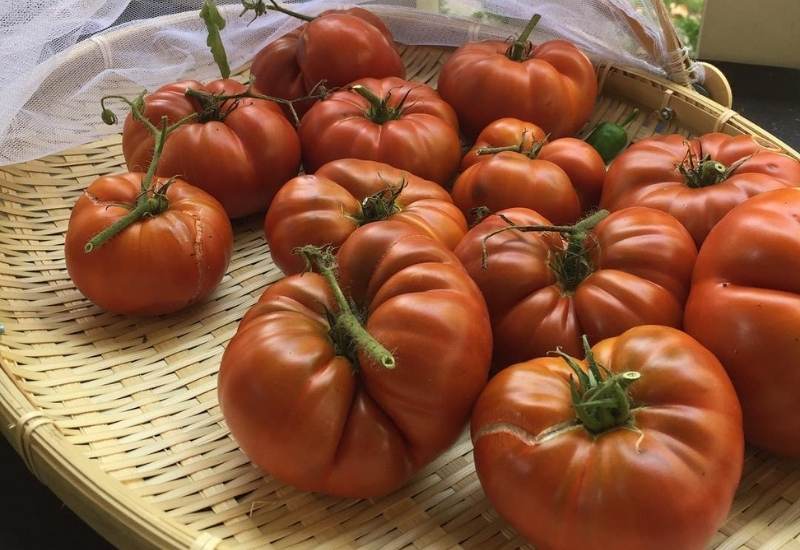
Though it doesn’t taste like chocolate, this cocoa-red slicer has an abundance of flavor. The plants are small and compact for gardener’sw without much space.
They also grow great on patios or in containers with a standard tomato cage. The fruits are smaller than most beefsteaks but so yummy that it’s worth cutting into a few extra.
16: ‘Classic Beefsteak’
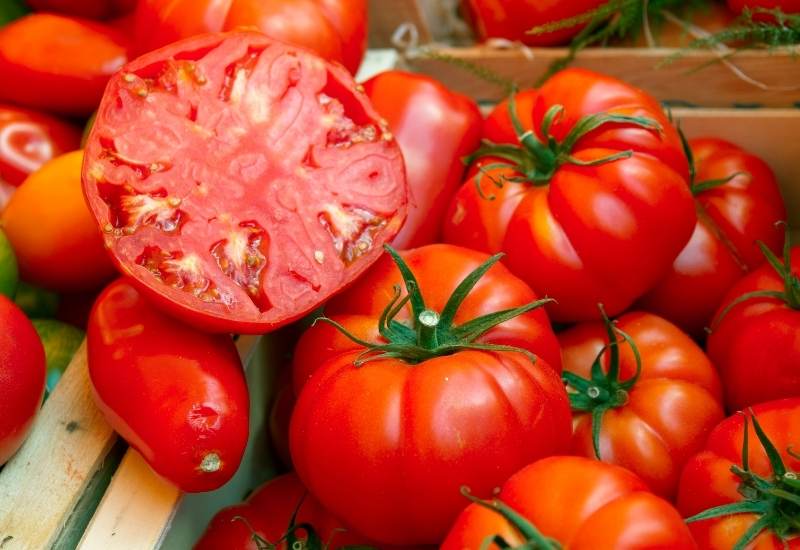
Baker Creek Seeds is known for their rare old-time varieties and this ‘Classic Beefsteak’ is no different. The massive fruits reach 1-2 lbs and maintain a firm, meaty texture with deep red color.
They have the old-fashioned tomato flavor that you crave on sandwiches, burgers, or sliced straight up with some salt! This variety is specifically adapted to the Northeast and similar climates.
17: ‘Large Barred Boar’
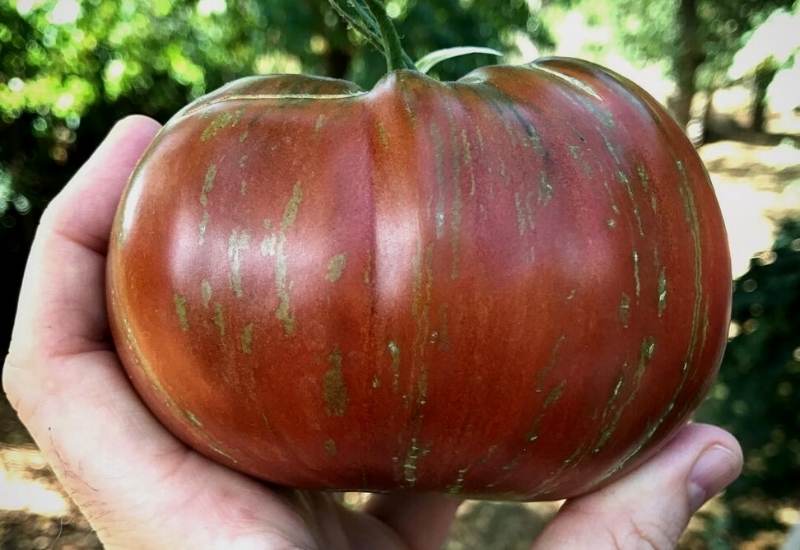
A flattened beefsteak variety that grows on stout plants, this striped heirloom produces fruit streaked with pink, brown, and metallic green. The pink meaty flesh is super delicious and stunning in any dish.
18: ‘German Johnson’
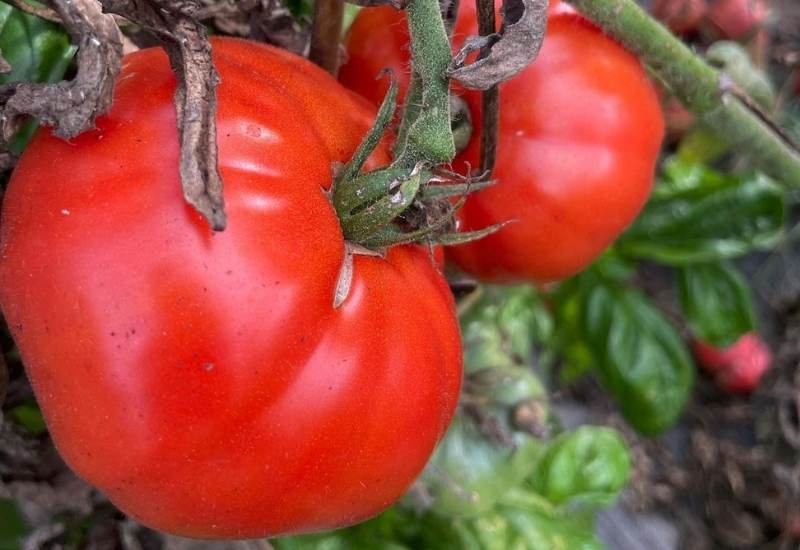
If you love that classic flattened pumpkin-shaped brandywine, ‘German Johnson’ won’t disappoint. It is more vigorous and high yielding than its OP brandywine-cousins.
The high productivity, acidic tomato flavor, and creamy rich texture make this one extra unique. It produces earlier and is extra prolific.
19: ‘Margold’
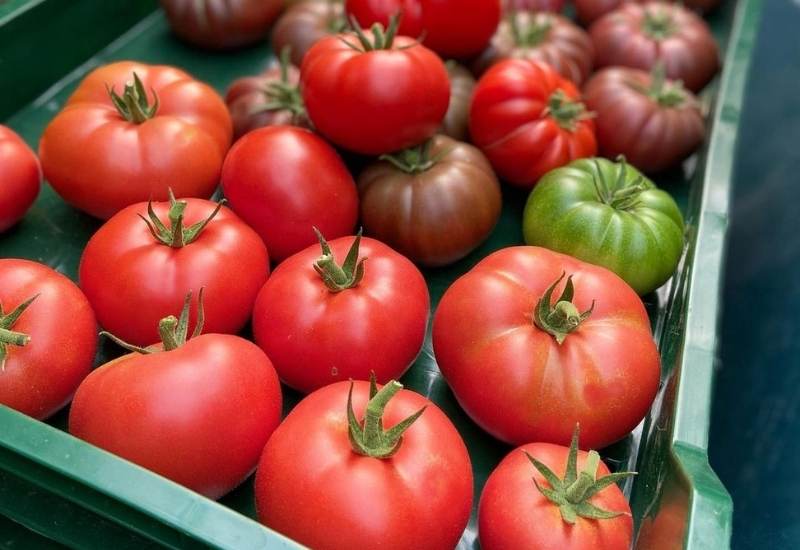
If you prefer bright sunshiny beefsteaks over the plain-old red, ‘Margold’ is a stunner in terms of aesthetics and flavor. This red-streaked yellow hybrid has great disease resistance and yield. The flesh is softer and the flavor is sweeter than ‘Striped German’.
Keep in mind that this variety requires at least 13 hours of daylight and may not do as well in northern climates. It is, however, highly resistant to leaf mold, tomato mosaic virus, and verticillium wilt.
20: ‘Beefmaster’
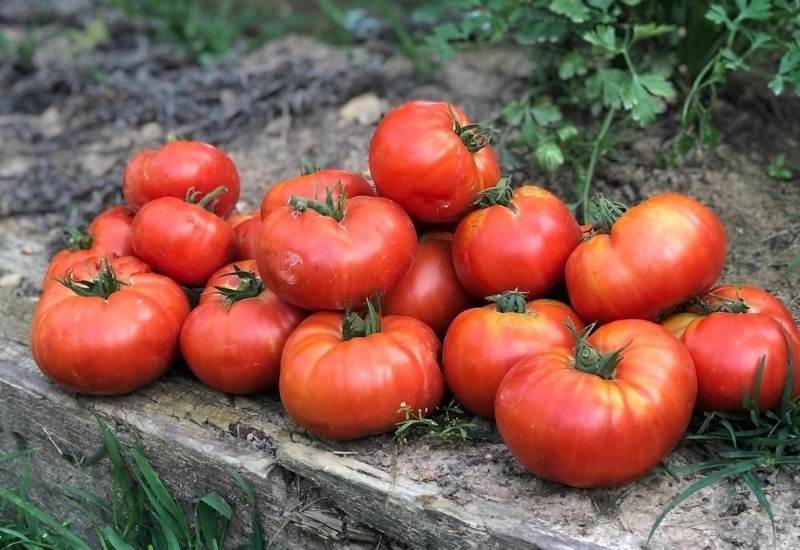
As one of the most popular hybrid tomatoes, ‘Beefmaster’ has earned a reputation for its extra large fruits and hybrid vigor.
The tomato is exceptionally high in Vitamins A and C, and has excellent flavor and texture for all slicing uses. These vining plants are disease resistant and pelleted for ease of sowing.
21: ‘Astrakhanskie’
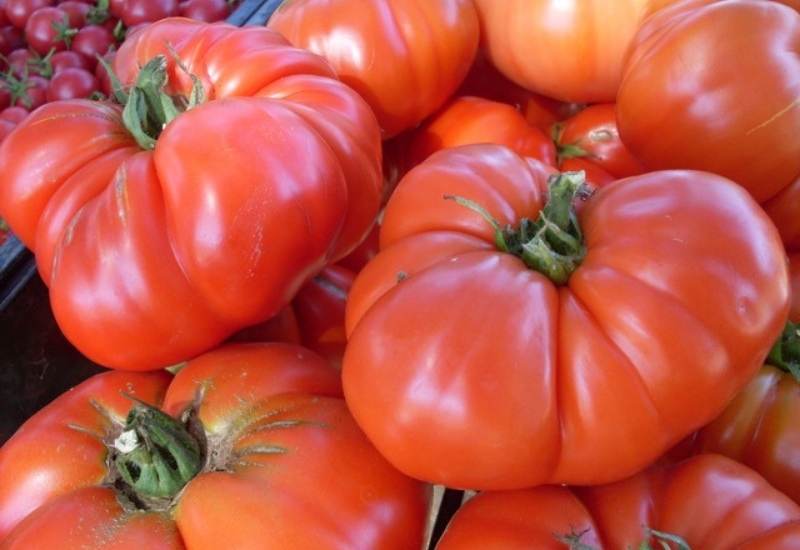
This tomato is a lot easier to eat than it is to pronounce. This giant beefsteak is native to Russia and has a beautiful flattened oblate shape with ribbing and vibrant red skin.
The flavor is actually best when it is slightly under ripe.
The vines are taller and floppy, so they need a reliable trellis. This cultivar is very productive for an heirloom and one of the go-to varieties for Russian chefs.
Final Thoughts
Beefsteak tomatoes are truly the classic All-American tomato. No matter which variety you choose, their massive size and exquisite flavor will complement every sandwich or burger you have all summer long.
Don’t forget to preserve some with freezing or canning! You may find yourself craving these ruby-red or rainbow-colored fruits in the dead of winter.
Beefsteak tomatoes are among the most rewarding and delicious tomatoes for any garden.
Happy growing!

Written By
Amber Noyes
Amber Noyes was born and raised in a suburban California town, San Mateo. She holds a master’s degree in horticulture from the University of California as well as a BS in Biology from the University of San Francisco. With experience working on an organic farm, water conservation research, farmers’ markets, and plant nursery, she understands what makes plants thrive and how we can better understand the connection between microclimate and plant health. When she’s not on the land, Amber loves informing people of new ideas/things related to gardening, especially organic gardening, houseplants, and growing plants in a small space.
